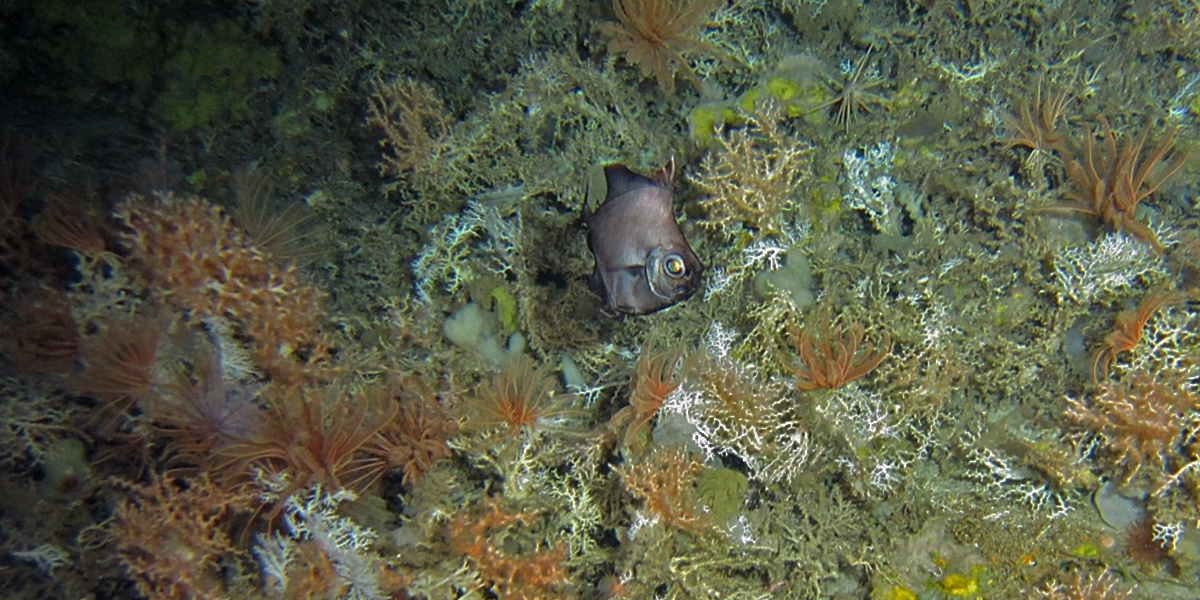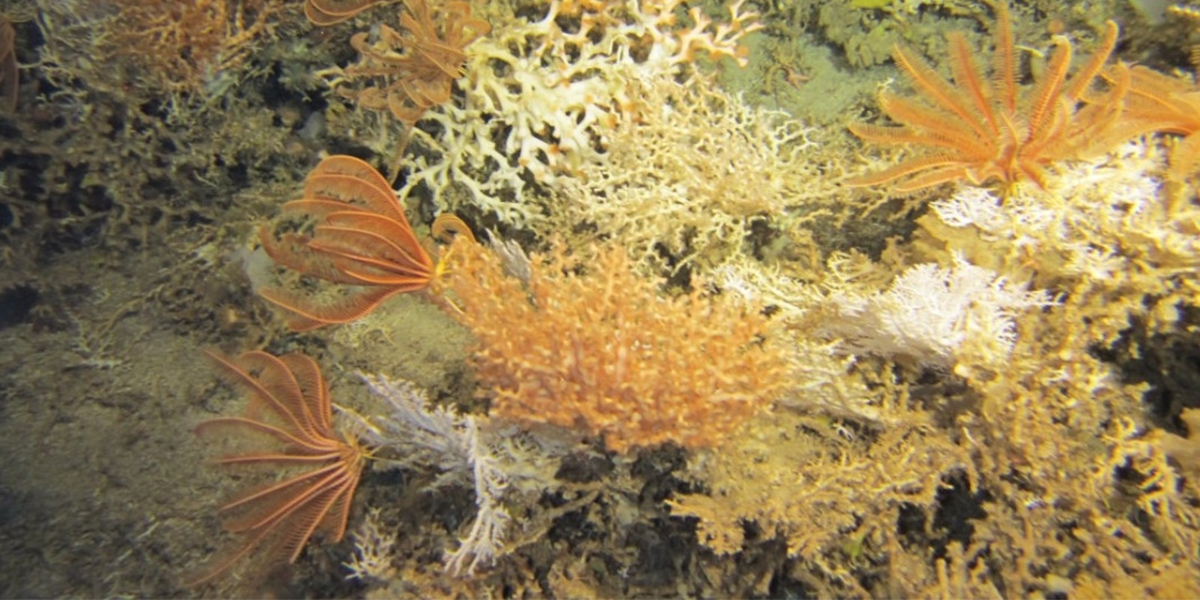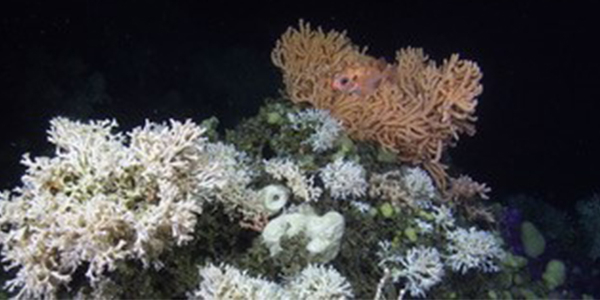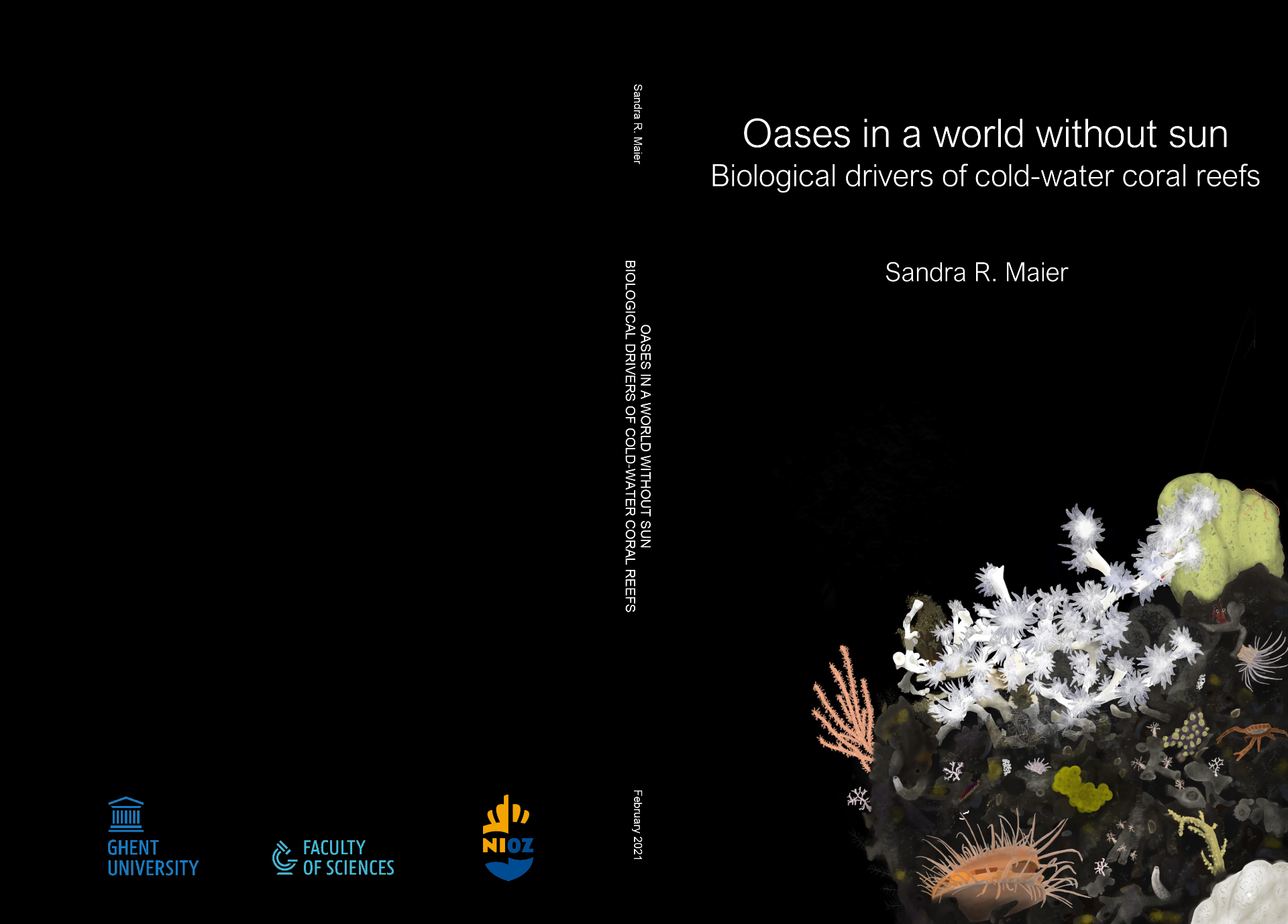Cold-water coral reefs: Oases in a world without sun

Adapting to the seasons
‘On deep reefs at temperate latitudes, such as in the North-East Atlantic and the Norwegian Sea, food availability is not consistently low throughout the year’, Maier explains. ‘In spring, phytoplankton, small unicellular algae, and zooplankton, small drifting animals, form blooms at the ocean surface. Parts of this material are exported to the deep sea where it serves as food for the corals.’ However, in winter food becomes scarce. Maier discovered how the most-common cold-water coral species, Lophelia pertusa, synchronizes its activity with the fluctuation of available food during the different seasons. Maier: ‘The corals exploit the ‘spring feast’ and store left-overs as lipids in their tissue.’
Filtration-recycling plant
Healthy and growing coral colonies leave behind a framework of dead coral skeletons. In turn, these skeletons serve as habitat for many deep-sea species, providing food and shelter. But how do these reefs sustain so many organisms in the food-limited deep sea? Maier explains that cold-water corals release mucus into the reef waters. This mucus dissolves and increases a pool of so-called dissolved organic matter. ‘We found that many reef animals such as sponges, bivalves and anemones feed on dissolved organic matter and other substrates such as bacteria.’ These animals then produce fecal waste, which is in turn consumed by other animals such as brittle stars. Maier: ‘The deep-sea cold-water coral reefs seems to work like a filtration-recycling plant. Food particles are efficiently filtered from the passing water and a variety of recycling pathways ensure that little material is lost from the reef system.’
Although the deep-sea coral reefs and their inhabitants show great resilience at times of food-shortage, some of the recent data leave Maier worried. ‘Our data indicate seasonal energetic shortages that may force the corals to reduce their metabolic activity and growth.’ A worrisome indication in a time of global climate change which could aggravate energetic shortages and challenge the boundaries of the cold-corals’ resilience.


Defence
Oases in a world without sun. Biological drivers of cold-water coral reefs.
Sandra R. Maier
Supervisors: Prof. Karline Soetaert and Dr. Dick van Oevelen
University: University of Gent, Faculty of Science
Date and time: February 3, 16:00-18:00
Join the online defence:
https://tinyurl.com/y5x3nlc4
